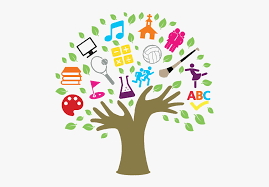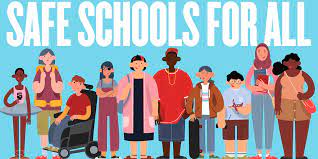School Based Monitoring and Support: Middle Schools
Board Goals
Goal 1: The Percent of All Fourth Grade Students Proficient on the ISASP ELA Assessment Will Increase From 52.7% in June 2022 to 67% in June 2026.
Goal 2: The Percent of Black Male Fourth Grade Students Proficient on the ISASP ELA Assessment Will Increase From 29.5% in June 2022 to 67% in June 2026.
Goal 3: The Percent of Black Male Eleventh Grade Students Proficient on the ISASP Mathematics Assessment will Increase From 17.7% in June 2022 to 45% in
June 2026.
Goal 2: The Percent of Black Male Fourth Grade Students Proficient on the ISASP ELA Assessment Will Increase From 29.5% in June 2022 to 67% in June 2026.
Goal 3: The Percent of Black Male Eleventh Grade Students Proficient on the ISASP Mathematics Assessment will Increase From 17.7% in June 2022 to 45% in
June 2026.
|
Description:
High quality curriculum is aligned, rigorous, incorporates research-based features, and includes equitable and responsive teaching practices that raise students' self-worth and affirms their developing identities. Access: Students receive grade-appropriate assignments, strong instruction, deep engagement and teachers with high expectations. |
Aligned Anti-Racist Findings:
Anti-racist curriculum, inclusive history, and/or alternatives to standardized testing. More student voice in curriculum and learning. Aligned Anti-Racist Findings: Changes to the system driven by community, parents, and students, with a reduction in hierarchical decision making. Build trust across stakeholder groups. |
Desired State By Year (Objectives)
2023-2024
|
District Level Objectives
|
School Level Objectives
|
|
Fall
|
Monitoring Tools
Curriculum and Access Resources
|
Description:
|
Aligned Anti-Racist Findings:
|
Desired State By Year (Objectives)
2023-2024
|
School Level Objectives
Spring
|
District Level Objectives
Spring
|
Monitoring Tools
Access to School/Attendance Resources
|
Description:
Social Emotional Learning is the process through which all young people and adults acquire and apply the knowledge, skills, and attitudes to develop healthy identities, manage emotions, and achieve personal and collective goals, feel and show empathy for others, establish and maintain supportive relationships, and make responsible and caring decisions. |
Aligned Anti-Racist Findings:
Increase focus on social-emotional learning, restorative practices, and building teachers’ skills to talk about race and social justice. To accomplish that we must:
|
Desired State By Year (Objectives)
2023-2024
|
District Level Objectives
|
School Level Objectives
|
|
Fall
Spring
|
Fall
|
Monitoring Tools
Social Emotional Learning Resources
|
Description:
Learning will happen when all needs are met. We know that in order to allocate resources efficiently to meet student needs, the data need to be accurately monitored. |
Aligned Anti-Racist Finding:
Increase focus on social-emotional learning, restorative practices, and building teachers’ skills to talk about race and social justice. Re-evaluate and reduce presence of SROs and instead focus resources on counselors and student supports. |
Desired State by Year (Objectives)
2023-2024
|
District Level Objectives
|
School Level Objectives
|
|
Fall
|
Fall
Winter
|
Health & Well-being Monitoring Tools
Health & Well-being Resources
|
Description:
Provide students with a sense of belonging with opportunities within and beyond the school day. Create space for students, families and community to have shared voice and influence at the decision-making table. Ensure each student has a strong relationship with at least one adult in their building. |
Aligned Anti-Racist Findings:
Changes to the system driven by community, parents, and students, with a reduction in hierarchical decision making. Build trust across stakeholder groups. |
Desired State by Year (Objectives)
2023-2024
|
District Level Objectives
|
School Level Objectives
|
|
Fall
|
Fall
Winter
|
Engagement & Community Building Monitoring Tools
|
School Advisory Councils Qualtrics
|
Activities and Partnerships Dashboard
(All Students) |
Activities and Partnerships Dashboard
(Schoolwide Proportionality) |
Engagement & Community Building Resources
|
Description:
All stakeholders have the right to participate within a school community that values, prepares, provides and responds to physical, mental, emotional, and social safety. |
Aligned Anti-Racist Findings:
Increase focus on social-emotional learning, restorative practices, and building teachers’ skills to talk about race and social justice. (monitored in SEL lever) Re-evaluate and reduce presence of SROs and instead focus resources on counselors and student supports. (Monitored here) This lever specifically address equity by ensuring procedures and protocols are developed and implemented with fidelity across all campus, ensuring safety is a collective commitment and a community supported result. |
Desired State by Year (Objectives)
2023-2024
|
District Level Objectives
|
School Level Objectives
|
|
Fall
|
Fall
|






